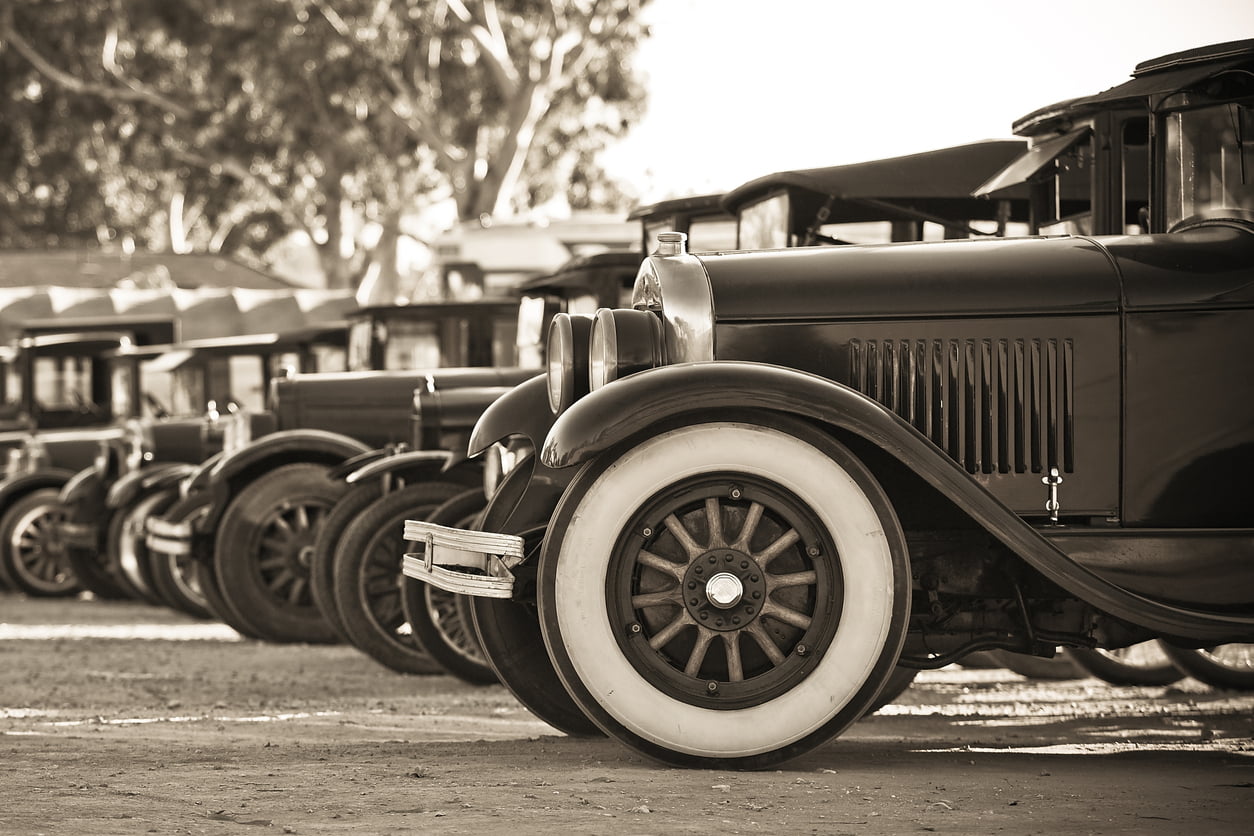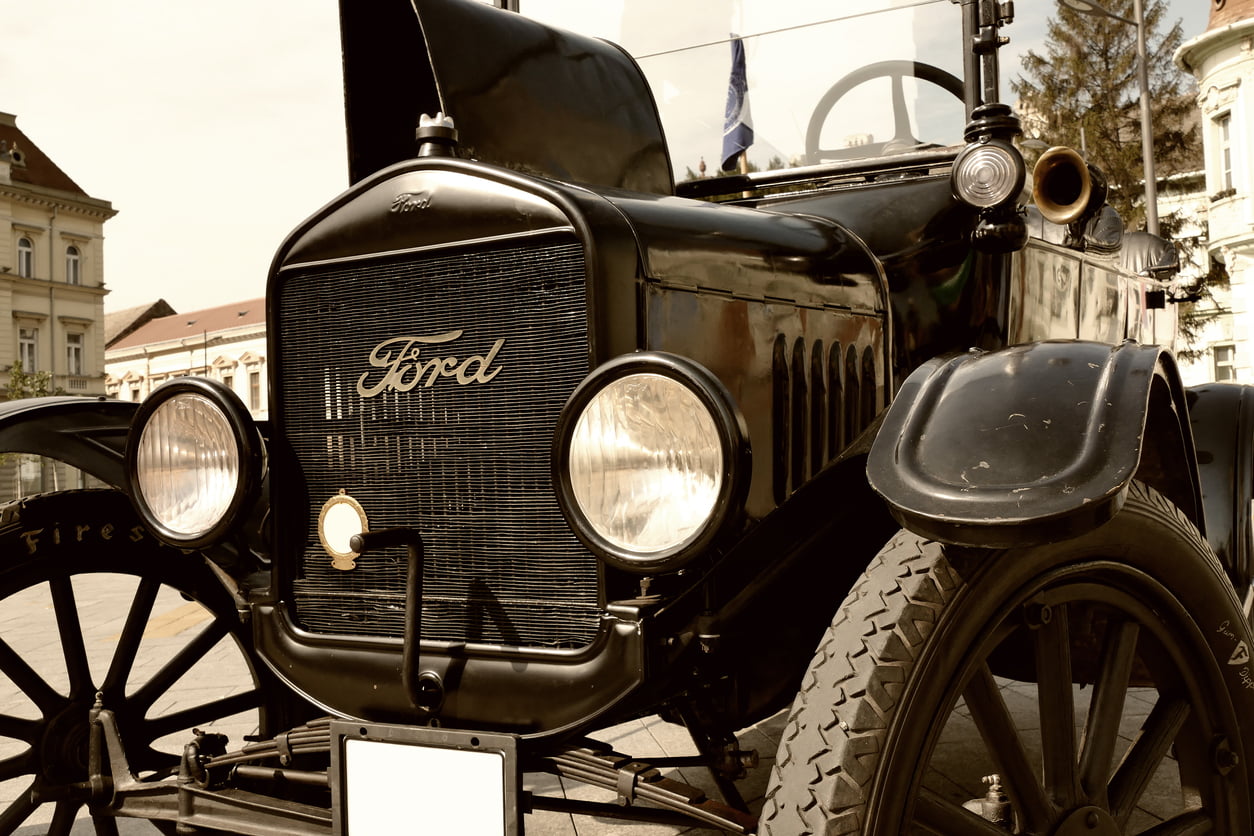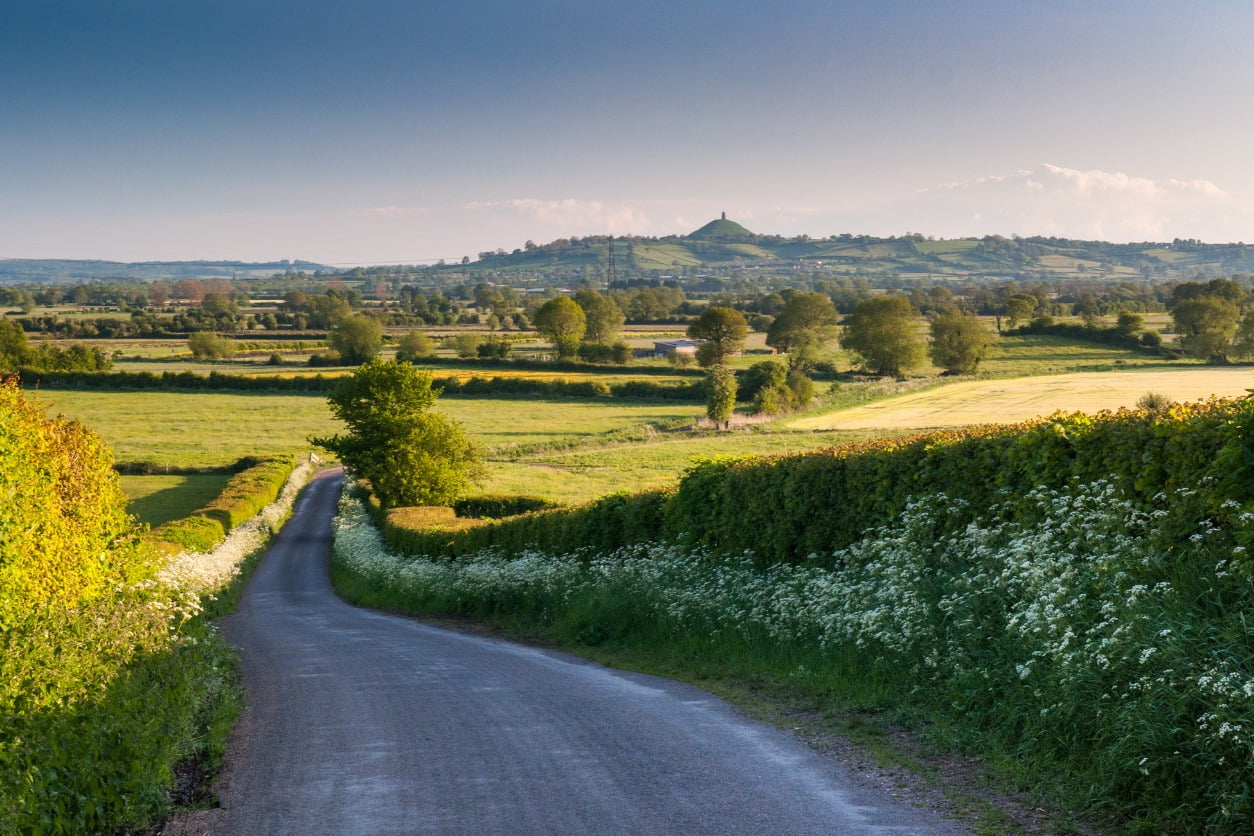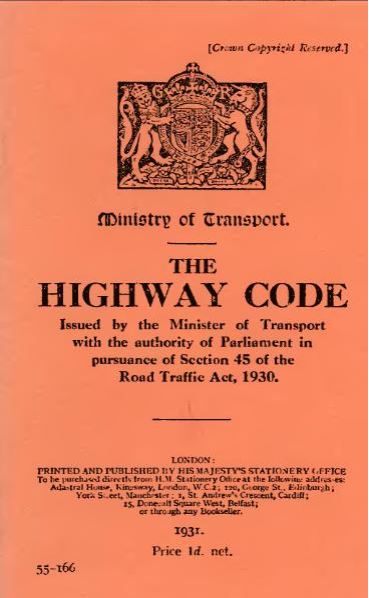 Despite the fact cars have only been a fixture of Britain’s roads for 100 years, it’s incredible to look back and consider how far they’ve come. From the Model T to the modern hybrid, the rise of motoring has been stratospheric over the past century, with millions of cars bought, thousands of miles of tarmac laid, and dozens of driving records broken and set.
Despite the fact cars have only been a fixture of Britain’s roads for 100 years, it’s incredible to look back and consider how far they’ve come. From the Model T to the modern hybrid, the rise of motoring has been stratospheric over the past century, with millions of cars bought, thousands of miles of tarmac laid, and dozens of driving records broken and set.
The 2020s already look set to be a big decade for motoring. With environmental pressures raising questions about the future of our cars and new technology emerging all the time, there are some big changes afoot. And that’s interesting, because the 1920s were also a pivotal time for motoring. Simoniz was already 10 years old by the time the 1920s rolled around, but it was the decade in which with Britain embraced car ownership for the first time.
100 years on we’re going to compare these two decades to find how they differ. What kind of cars were on the road in the 1920s compared with today? What were roads like to drive on back then? And what rules have been introduced to keep us safe as cars have got quicker and our roads more dangerous?
The Cars
 Cars have changed almost beyond recognition since the 1920s. We’d love to see Henry Ford’s face if he saw some of the cars on the road today. The pace of change in 100 years has been incredible, with cars going from being a rich man’s luxury to an everyday commodity.
Cars have changed almost beyond recognition since the 1920s. We’d love to see Henry Ford’s face if he saw some of the cars on the road today. The pace of change in 100 years has been incredible, with cars going from being a rich man’s luxury to an everyday commodity.
Here, we compare two cars to see just how far things have moved on, including the iconic Ford Model T and its modern equivalent, the beloved Ford Fiesta – and these stats don’t even include developments such as seat belts and indicators.

Cars like the Ford Model T were responsible for putting the world on wheels, with millions sold between 1908 and 1927. The engineering behind such motors was starkly different to the cars of today, with two gears, two clutches, a pedal for reverse and a hand-controlled accelerator. Driving one would be just about impossible today’s drivers who are used to the standard three-pedal, one clutch and five gear format – not to mention those who only drive automatic!
And, things become even more interesting when you consider that the next generation of cars is right around the corner. If you told a motorist from the 1920s that one day they’d be driving a car which runs entirely on electricity or considering driverless cars, they’d probably laugh. But this is the reality in 2020, with electric vehicles entering the mainstream and becoming a viable option for everyday motorists.
The Roads
 Today, the UK is connected by thousands of miles of roads and carriageways, and new routes are being created every year. But it hasn’t always been this way, and for the driver of the 1920s, getting from A to B could be an adventure.
Today, the UK is connected by thousands of miles of roads and carriageways, and new routes are being created every year. But it hasn’t always been this way, and for the driver of the 1920s, getting from A to B could be an adventure.
When the first motor cars began rolling off the production line in the early 1900s, Britain’s road network didn’t exist. Sure, there were tracks and thoroughfares connecting major towns and cities, but these were often nothing more than cobbled or dirt lanes built for horse and carriages.
As well as poor roads, the signposts beside them weren’t much better, so getting lost on an unfamiliar road was par for the course of driving in the early 20th century.
Thankfully in 1910, a new government department was created to sort out the mess and develop Britain’s driving infrastructure. Aptly named the ‘Roads Board’, it spent over a decade classifying the UK’s existing roads and figuring out which new routes would be needed to build a reliable network for car drivers.
In 1920, work began on formalising and building the network based on a classic “hub-and-spoke” system. This involves a series of ring roads around major towns and cities with trunk routes leading to other destinations (the idea being that this resembled a bicycle wheel).
Signposts were also updated on a national level, with work carried out throughout the 1920s to make sure all roads were identifiable. While this early form of signposting has been updated on several occasions over the decades, British roads are based on the same infrastructure and network design as those dreamt up in the 1920s – minus motorways, toll roads and other faster routes, which were added after WWII.
Today, the UK road network is longer and more expansive than ever, with some 246,700 miles of paved roads across the country. This includes:
- 2,300 miles of motorway
- 29,400 miles of ‘A’ roads
- 18,800 miles of ‘B’ roads
- 53,400 miles of ‘C’ roads
- 142,700 miles of ‘U’ roads
The Rules

Back in the early 1920s the roads were something of a free-for-all, with very little to distinguish bad driving from sensible driving.
Consider this: the Highway Code wasn’t released until 1931, so drivers in the 1920s had considerable free rein over how they drove. While certain rules did exist they weren’t necessarily adhered to, and the police had a difficult time enforcing them before the official Highway Code was published.
That said, the Motor Car Act 1903 did stipulate a few rules for motorists, including enforcing a speed limit of 20mph – a restriction which stood until 1931. Traffic lights were also introduced in 1926, with the first set appearing in Piccadilly, London.
Driving licences were officially introduced in 1903 as part of the Motor Car Act, but they weren’t accompanied by a test – it was just a document you paid for. Motorists also had to register their car and sign a waiver stating that they’d endeavour to stick to the 20mph limit. Remarkably, formal driving tests weren’t introduced until 1935, and even then, they were only voluntary. This meant that just about anyone could drive a car in the 1920s, provided they had the money to pay for a driving licence.
Jump ahead 100 years and the UK’s rules of the road are more stringent. Since the 1920s hundreds of rules have been put in place to make roads safer, and these are constantly updated to reflect changing driving habits and new risks. Penalties are also much more severe, and enforcement technology such as speed cameras have made it much easier for the police to enforce the rules and regs of the Highway Code.
The 1920s were when Britain’s love affair with motoring began, and 100 years on not much has changed when it comes to our love for cars and driving. If you love your car, take care of it with Simoniz. Our car care range is designed to help you clean and maintain your car inside and out. For more details, visit the homepage.
